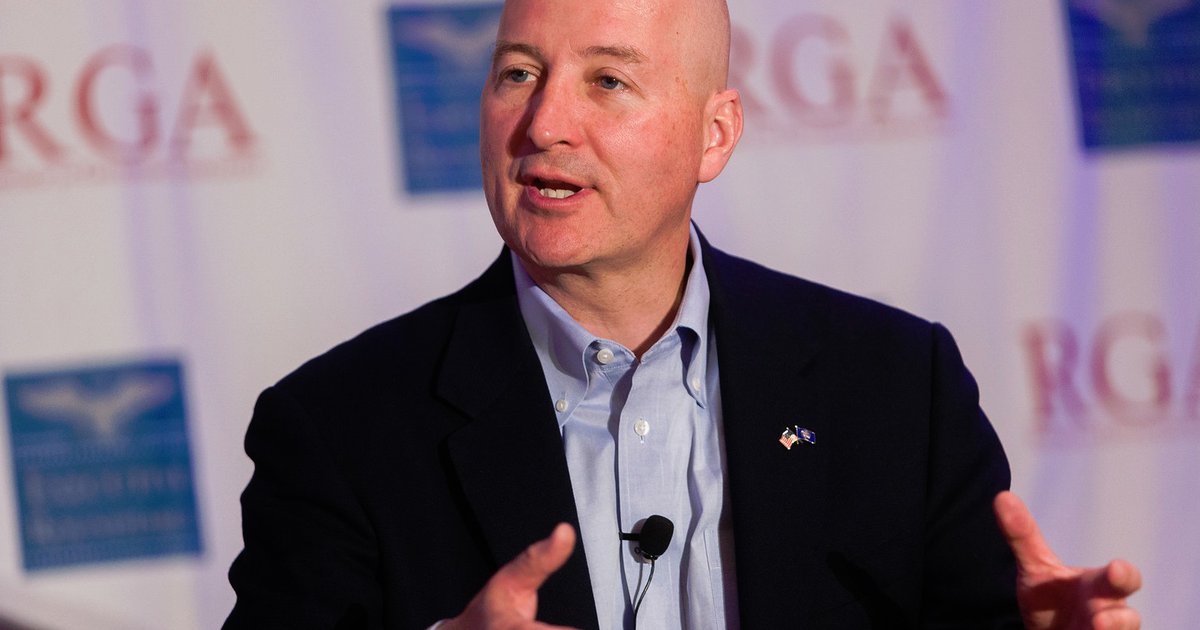GOP Governor Pete Ricketts is working hard to empower Nebraska farmers and ranchers who serve as the backbone of the state’s number one industry. In honor of National Ag Week, Governor Ricketts penned a new op-ed highlighting Nebraska’s efforts under his leadership to promote the state’s agricultural industry. By securing new investment, expanding biofuels, and fighting for property tax relief for working farmers, Governor Ricketts has Nebraska’s vibrant agricultural sector soaring to new heights.
Governor Pete Ricketts writes in the North Platte Telegraph:
Thomas Jefferson once remarked that ‘agriculture is our wisest pursuit, because it will in the end contribute most to real wealth, good morals and happiness.’ In Nebraska, we have experienced this truth through the years. Farmers and ranchers helped build the Good Life, and they form the backbone of Nebraska’s No. 1 industry today.
This week is National Ag Week, which gives all Nebraskans time to celebrate the pivotal role agriculture plays in the life of our state. As we observe National Ag Week, Nebraska Department of Agriculture Director Steve Wellman and I will be traveling across the state to visit with our farmers and ranchers and highlight the innovative ways they are growing Nebraska.
These visits are a great opportunity to show how this $21 billion industry has a large economic impact on every part of our state. One in four jobs in Nebraska are ag-related. In addition to farm work, ag-related industries employ Nebraskans who manufacture irrigation equipment in Hastings, process food in Omaha and conduct research at the university in Lincoln, among many other occupations.
As we travel the state, we will also be highlighting some of the key ways we can continue to grow agriculture. Four key strategies can help make agriculture strong for years to come: expand international trade, encourage livestock development, support biofuels production, and deliver major property tax relief.
International trade grows agriculture by opening up new markets for our quality commodities and recruiting ag-related business which creates new jobs. From 2016 to 2017, pork exports from Nebraska were up 20 percent, and beef exports were up 12 percent. That’s tremendous growth in one year. Currently, Nebraska beef exports to Europe and China represent more than half of the total U.S. exports to those markets, and we will continue to grow these markets by leading international trade missions.
On a trade trip to Canada last August, I met with Agri-Plastics to encourage them to invest in Nebraska. Shortly after that trade mission, Agri-Plastics announced they were expanding their calf-housing line by opening a production facility in Sidney — their first in the United States.
Livestock development helps create local demand for Nebraska’s quality commodities by adding value to the billions of bushels of feedstocks our farmers produce each year. Last year we broke ground on a $300 million Costco chicken processing project near Fremont and Hendrix-ISA’s chick hatchery in Grand Island and turkey hatchery in Beatrice became realities. When you consider additional investments from Cargill, Novozymes, and Evonik, Nebraska has seen more than $650 million invested in value-added ag and biofuels operations.
Nebraska is attracting these investments thanks to our pro-growth climate for livestock production. The Livestock Friendly County designation shows the public that these counties are open for business. Red Willow is Nebraska’s newest Livestock Friendly County, bringing the total number of counties in the program to 44. Additionally, Dodge and Merrick became the first two counties in the state to voluntarily adopt the livestock siting assessment matrix to bring greater predictability to decisions on livestock siting applications.
Biofuels also play a critical role in the state’s agriculture industry. Nebraska is the second-largest producer of ethanol in the country. The synergistic relationship between corn, ethanol and livestock encourages the success of all three industries. In 2017, we experienced approximately $190 million in new technology investments in Nebraska’s ethanol plants. Last year, I traveled to Washington, D.C. to testify in support of a robust Renewable Fuel Standard (RFS). And just last week, I joined six other Governors who sent a letter urging President Donald J. Trump to maintain a strong RFS.
The final key to growing agriculture in the coming years is major property tax relief. Right now, Nebraska’s high property taxes are hurting the state’s hardworking ag producers and families. National rankings show Nebraska has the 11th highest property taxes in the nation, and the highest of the surrounding states. That’s why the Revenue Committee and I have worked together on the Nebraska Property Tax Cuts and Opportunities Act. This bill would deliver about $4 billion of property tax relief for Nebraska’s ag producers and families over the next 10 years.
If you want to see major property tax relief done, time is running out this session: I encourage you to contact your state senator. Their information can be found at NebraskaLegislature.gov.
Previously:







